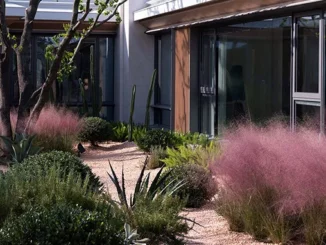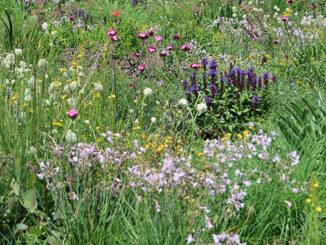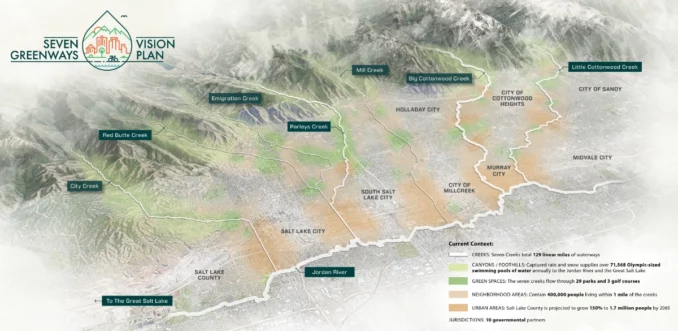
Context For Urgent Climate Action
Over the past two centuries, humans’ relationship with the Wasatch Range streams has altered from fishing and hunting grounds of Indigenous people, to canyon passageways for colonial settlers, to industrialization resources, to a nuisance and impediment of progress. Rapid urbanization resulted in creek burial and channelization. Now with the valley floor reaching dangerous levels of air pollution, drinking water scarcity, intensity of heat waves, flood risks, and drought crisis, treatment of the creeks is being reexamined – pursuing nature as a solution for public health and livability. Efforts to understand and address environmental justice issues for surface water are starting to take shape.
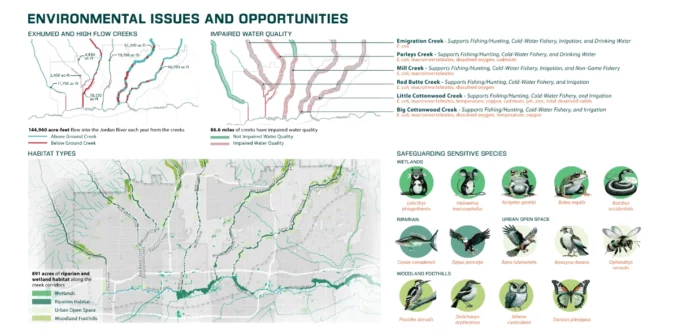
Strength In Regional Unity
In this culture of strong private property rights, a community-supported framework is needed that is not constrained by jurisdictional lines. While providing benefits to some, past piecemeal creek projects have not embraced ecosystem and watershed-scale opportunities, and at worst, created downstream negative affect, entrenched inequalities, and displaced wildlife or humans. As a profound approach, a coalition formed including the regional council, eight municipalities, Salt Lake County, and state and federal agency partners.
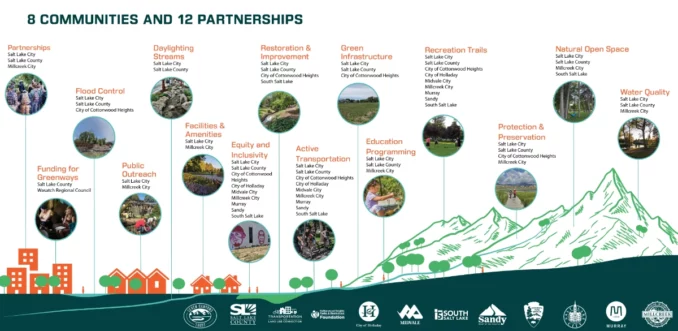
The project landscape architect facilitated coalition workshops to gain consensus on objectives and aspirations. Case study examination of successes and confronting failures was a useful framework for identifying pervasive topics. The group discovered large-scale reciprocal efforts that would have the most sustainable success. This was formulated into a 100-year vision for big change to be possible through smaller actions. Before this project, individual cities competed for small local grants, causing a sense of scarcity. This has changed with the plan’s compelling cross-government projects applicability for exponentially greater funding.
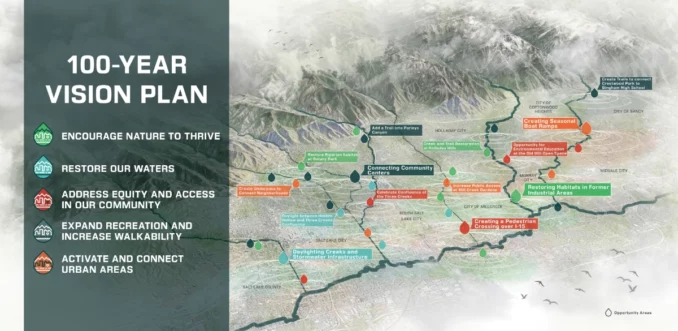
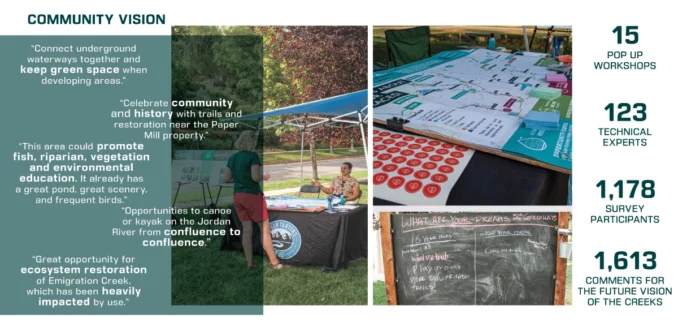
Analysis Of Water Justice
Disparate data sources were collected to create the first comprehensive report for the region, understanding historic, current, and future conditions. The depth of systems analysis of ecology, social/cultural, built environment, economic, recreation, and mobility exemplifies the usefulness of the profession for answering complex questions about social and environmental justice.
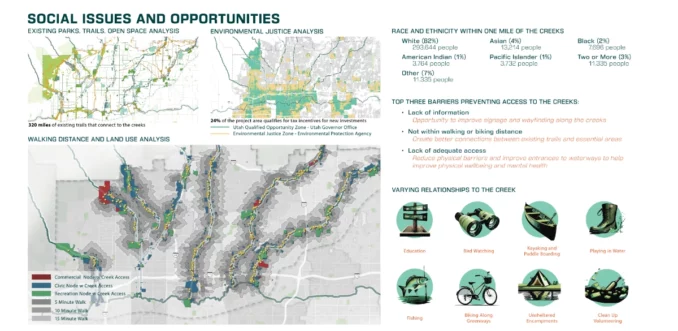
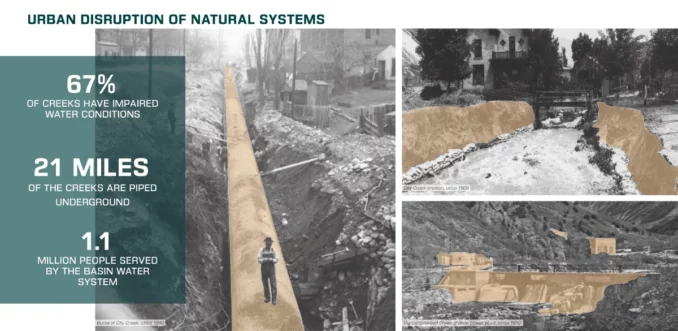
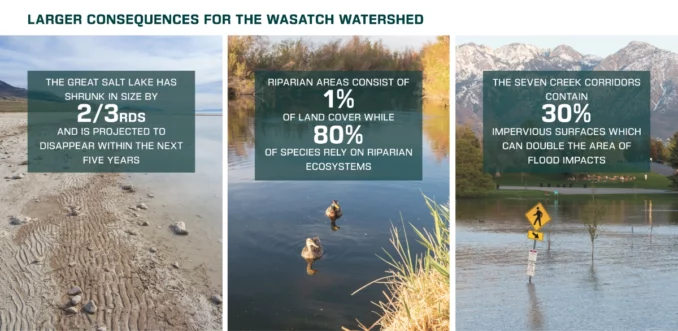
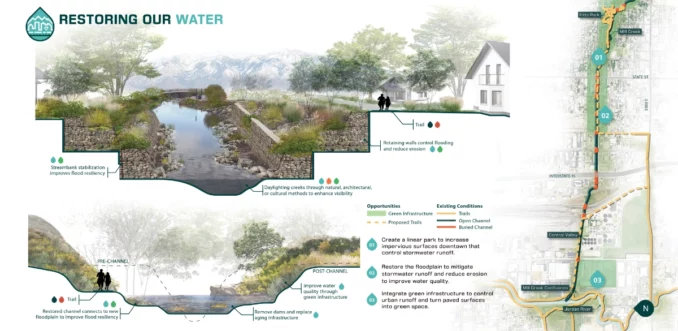
The data was used to educate the public about why the creeks are still worth protecting and enhancing, highlighting the most urgent issues. This includes innovations for evaluating disparities in community health and access to nature, identifying inequalities based on race, ethnicity, age, and income. The result is justice for water access and community investment.
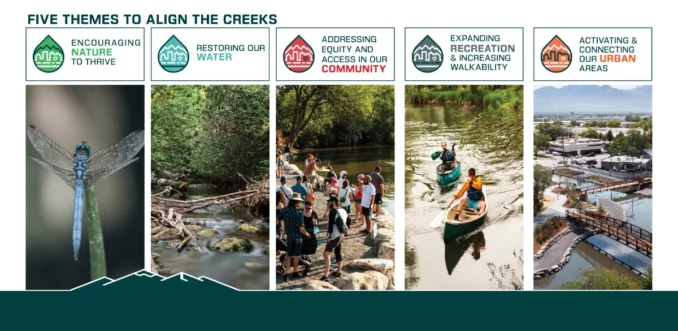
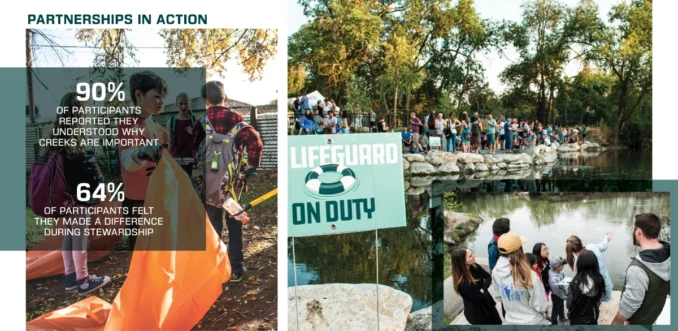
Inclusiveness Overcomes Apathy
Thousands of community members provided input that formed the plan ideas and priorities. Inclusive engagement, such as park chats in Spanish, discussion topic seminars, online mapping tools, trail tours, and university student outreach, ensured representation from all geographic areas and demographics. This has broadened ongoing community stewardship.
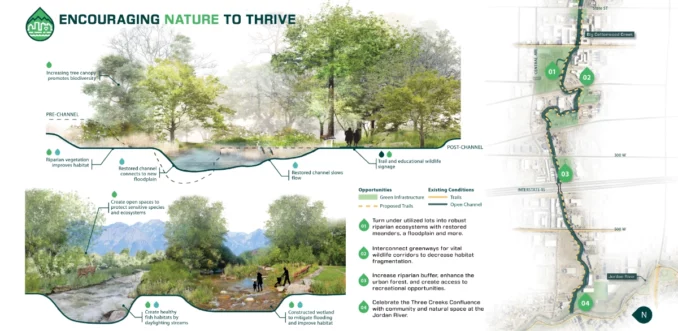
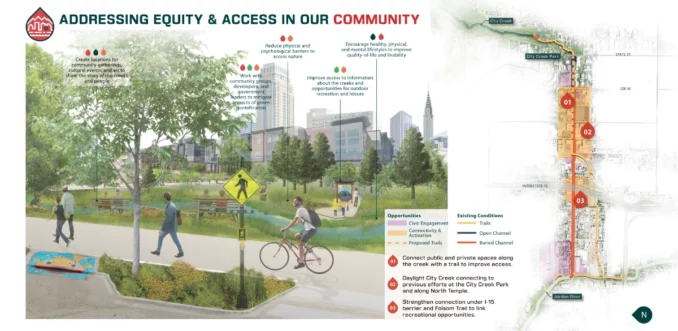
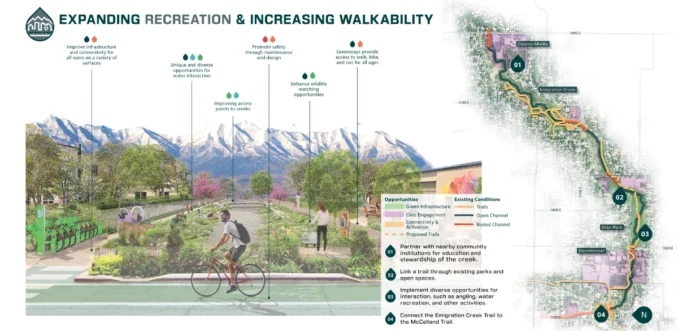
Scalable Solutions For Large-Landscape Conservation
This solution-finding model provides obvious advantages, such as the completion of multi-jurisdictional trail links, as well as underlying policy reform, governance, maintenance, and funding mechanisms. The Seven Greenways Vision plan represents hope, with actionable steps for climate resilience to benefit future generations and wildlife.
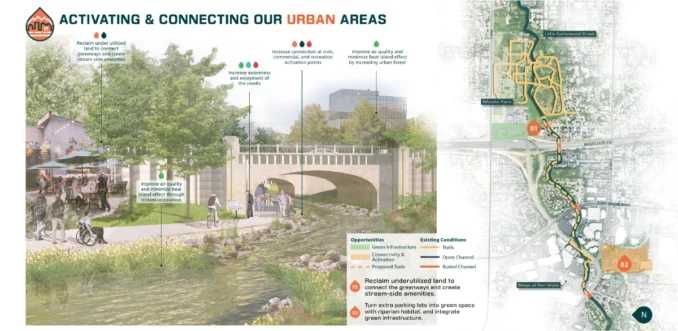
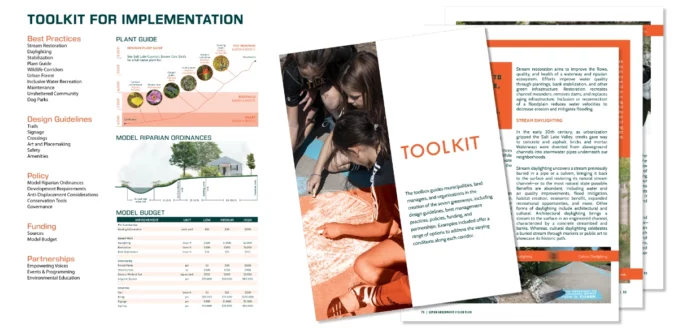
Seven Greenways: A Cooperative Vision for Water in the Arid West
Design Firm: Design Workshop Inc. – Aspen, Colorado
Design Workshop Team
Anna Laybourn – Principal, Alison Bourquin – Project Manager, Mary Oliver – Project Manager, Ashton Breeding – Graphic Designer, Jennifer Pintar – Designer / GIS,
Consultants:
Seven Canyons Trust – Brian Tonetti
Wasatch Front Range Regional Council – Megan Townsend
Image Credits: Design Workshop, Inc.

